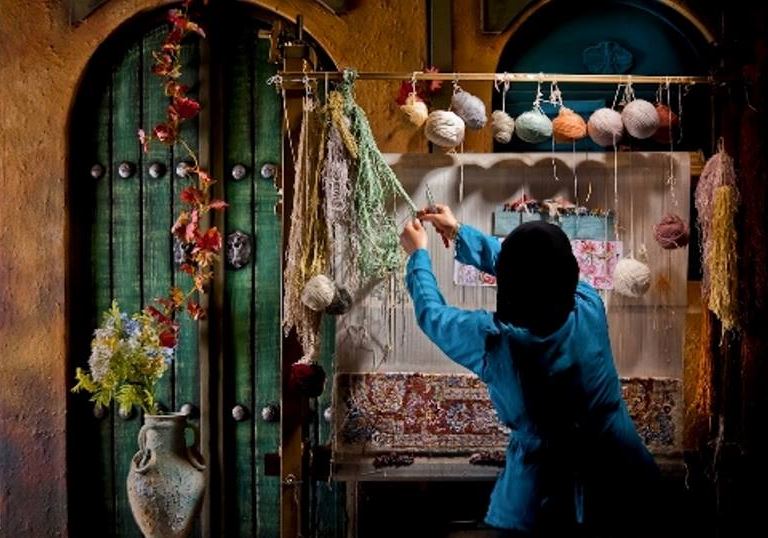Wool is the most common material for oriental rug (Persian rug) but cotton is frequently used for the foundation of city and workshop carpets. There are a wide variety in types of wool used for weaving. Those of which include Kork wool, Manchester wool, and in some cases even camel hair wool. Silk carpets date back to at least the sixteenth century in Sabzevar and the seventeenth century in Kashan and Yazd.Silk Rugs are less common than wool rugs since silk is more expensive and less durable; they tend to increase in value with age. Due to their rarity, value and lack of durability, silk rugs are often displayed on the wall like tapestries rather than being used as floor coverings.
The weaving of pile rugs is a difficult and tedious process which, depending on the quality and size of the rug, may take anywhere from a few months to several years to complete.
To begin making an oriental rug, one needs a foundation consisting of warps: strong, thick threads of cotton, wool or silk which run the length of the rug and wefts similar threads which pass under and over the warps from one side to the other. The warps on either side of the oriental rug are normally combined into one or more cables of varying thickness that are overcast to form the selvedge.
Weaving normally begins by passing a number of wefts through the bottom warp to form a base to start from. Loosely piled knots of dyed wool or silk are then tied around consecutive sets of adjacent warps to create the intricate patterns in the rug. As more rows are tied to the foundation, these knots become the pile of the rug. Between each row of knots, one or more shots of weft are passed to tightly pack down and secure the rows.
Depending on the fineness of the weave, the quality of the materials and the expertise of the weavers, the knot count of a handmade rug can vary anywhere from 16 to 800 knots per square inch.
When the oriental rug is completed, the warp ends form the fringes that may be weft-faced, braided, tasseled, or secured in some other manner.

